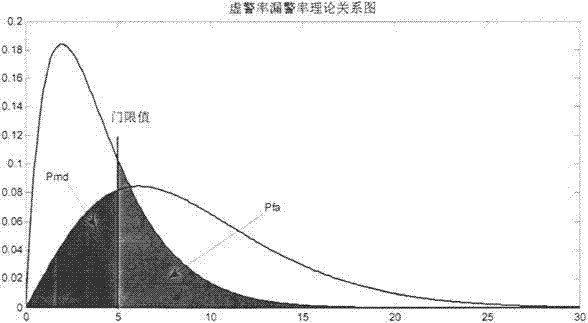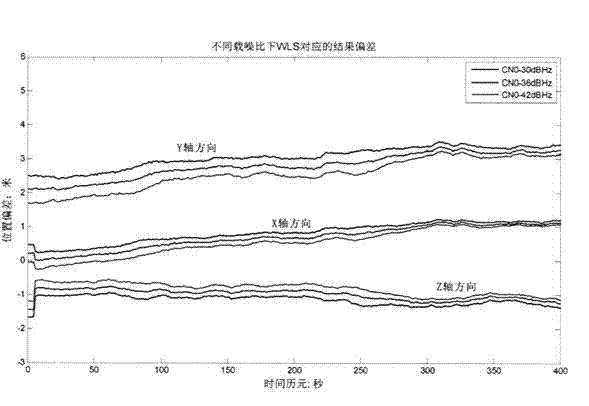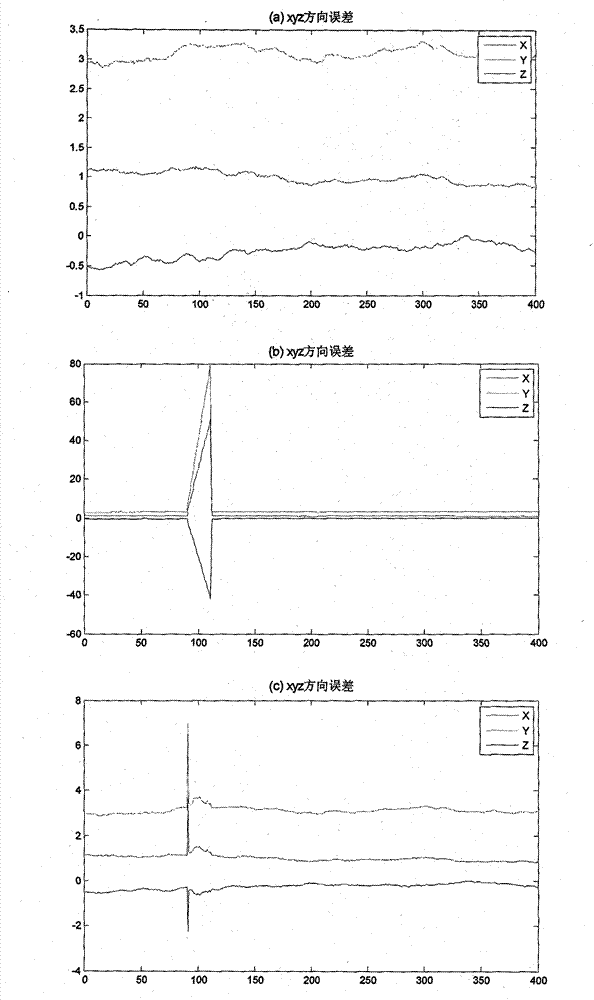Method for realizing single-mode RAIM (Receiver Autonomous Integrity Monitoring) under small number of visible satellites based on assistance of clock correction
A technology for realizing method and auxiliary equation, applied in the field of satellite navigation
- Summary
- Abstract
- Description
- Claims
- Application Information
AI Technical Summary
Problems solved by technology
Method used
Image
Examples
Embodiment Construction
[0085] The present invention will be further described in detail below with reference to the drawings and examples.
[0086] Such as figure 1 As shown, a flow chart of a low-visibility sub-satellite single-mode RAIM method based on a clock error auxiliary equation implemented according to steps 1 to 7 of the summary of the invention. The receiver determines the weight matrix according to the carrier-to-noise ratio information of the satellite signal tracked by the code ring and the carrier ring, and the atmospheric delay of the signal propagation process; determines the minimum detection deviation according to the false alarm rate and the missed alarm rate allowed by non-precision users, and passes the error geometry Factor SLOPE max Determine the availability of RAIM; determine the RAIM detection threshold according to the degree of freedom of the chi-square distribution and the false alarm rate; add the receiver clock error auxiliary equation according to the Newton interpolat...
PUM
 Login to View More
Login to View More Abstract
Description
Claims
Application Information
 Login to View More
Login to View More - R&D
- Intellectual Property
- Life Sciences
- Materials
- Tech Scout
- Unparalleled Data Quality
- Higher Quality Content
- 60% Fewer Hallucinations
Browse by: Latest US Patents, China's latest patents, Technical Efficacy Thesaurus, Application Domain, Technology Topic, Popular Technical Reports.
© 2025 PatSnap. All rights reserved.Legal|Privacy policy|Modern Slavery Act Transparency Statement|Sitemap|About US| Contact US: help@patsnap.com



